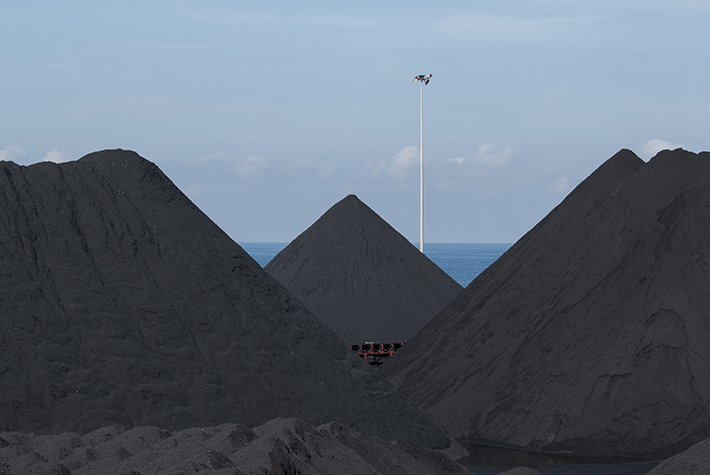
6 Standards Making a Difference for the Environment
When most people hear the phrase “environmental standards,” they think of things like water quality, renewable energy, and other popular “green” topics.
But there’s much more to it than that.
In fact, ASTM International’s committee on environmental assessment, risk management, and corrective action (E50) brings together stakeholders in industries as varied as finance, real estate, manufacturing, risk management, and more. Its six technical subcommittees have jurisdiction over 93 standards, which impact everything from commercial real estate transactions to corrective actions, pollution prevention, beneficial use, and biological effects, to name a few.
“The committee has a really broad focus because we touch on so many areas,” explains Dennis Rounds, committee chair. “But that’s what makes it so interesting. We have mechanical standards that deal with tanks and leak detection, technical standards that deal with cleanups, and then we have a whole area dedicated to real estate. So we have a wide variety of people working on these standards: engineers, insurance companies, regulatory agencies, environmental scientists, real estate experts, attorneys, and more. It’s a great mix of people coming together with different ideas, trying to help solve these problems.”
FOR YOU: Standards for Biodegradable Plastics
The committee has published numerous standards since its creation in 1990. To find out which of them are the most impactful, we asked Rounds for his opinion.
1) All Standards for Storage Tanks (Subcommittee E50.01)
The subcommittee on storage tanks (E50.01) was created in response to the U.S. Environmental Protection Agency’s (EPA) move in the 1990s to regulate storage tanks for petroleum products. The idea was to reduce the risk of leaks and mandate cleanup regulations but, as Rounds explains it, “The EPA had the cart before the horse.” The agency issued its directive without any guidelines, so ASTM members stepped up and wrote a series of standards that covered compliance with the new storage tank regulations.
Since the subcommittee was created specifically to address storage tanks, the standards that now cover risk-based corrective actions (RBCA) for chemicals of all types have found a home in the subcommittee on corrective actions (E50.04), now one of the committee’s most active. “E50 has really changed the way that we think about cleanups,” Rounds says. “And ASTM members had a lot of influence in the training that goes on around these risk-based corrective actions.”
2) Standard Practice for Environmental Site Assessments: Phase I Environmental Site Assessment Process (E1527)
Early in E50’s existence, the subcommittee on real estate assessment and management (E50.02) was established to develop a due diligence standard for property transactions. The aim was to assist property owners seeking to qualify for a recently enacted “innocent landowner” defense to the CERCLA (Comprehensive Environmental Response Compensation and Liability) Act, commonly known as “Superfund.” E1527 became the industry-accepted standard for conducting phase I environmental site assessments, and in 2002, Congress referenced it as an acceptable interim due diligence standard until EPA adopted new due diligence regulations. EPA invited the E1527 Task Group chair to serve on the advisory committee that developed these new regulations. EPA published its “All Appropriate Inquiry” regulations in 2005 and specifically referenced E1527 as an acceptable alternative to compliance with EPA regulations.
What makes this standard so influential is that industry has made it the due diligence standard of choice for property acquisitions in the U.S. EPA has renewed its reference of the standard each time E50 updated and renewed the standard.
3) Standard Practice for Limited Environmental Due Diligence: Transaction Screen Process (E1528)
According to Rounds, in the majority of cases, the parties are not seeking CERCLA landowner liability protections, meaning Phase 1 (E1527) would not be utilized. In these cases, E1528 is used to identify potential environmental concerns, as opposed to the known or suspected concerns addressed in E1527.

Committee E50 is working to prevent coal ash from becoming waste material.
4) Beneficial Use of Stored Coal Combustion Products (E3153)
The typical coal-mining facility can create millions of tons of coal ash, and E50 is working to prevent that ash from becoming waste material by developing standards for its use. That’s what this standard, one of the committee’s newest, is designed to address. It’s a niche standard according to Rounds, but one that is very influential in the hard rock mining industry.
5) Standard Guide for Developing Conceptual Site Models for Contaminated Sites (E1689)
Developed by the subcommittee on environmental risk management (E50.05), this standard addresses the financial side of environmental issues to help companies estimate their environmental-related liabilities. In fact, it’s a standard that many other committees base their risk management standards on. It outlines the processes for creating a conceptual site model; writing down a detailed description of the risks; listing what the potential receptors (i.e., entities impacted by contamination) might be; and determining what the cleanup process might look like.
6) Standard Guide for Development of Conceptual Site Models and Remediation Strategies for Light Nonaqueous-Phase Liquids Released to the Subsurface (E2531)
Among the most important standards to come out of the subcommittee on corrective action (E50.04), this standard addresses treatments for dealing with what are known as nonaqueous phase liquids (NAPLs), which are liquids that float on water, such as gasoline. Whenever there is a spill involving NAPLs, there is a chance that the liquid will filter into the ground water at the site. Remediation strategies for such liquids, also known as “free product,” are outlined here.
The work of committee E50 covers a range of industries that is truly remarkable and impacts daily life in ways most people do not even realize.
“A lot of folks think of environmental standards as nothing more than walking along and picking up trash,” Rounds says, “or cleaning smokestacks, dealing with sewage, and that kind of thing. But environmental care deals with all kinds of different things. This work impacts real estate, banks, property managers, insurance companies, and more, not just the environmental professionals.”
Tim Sprinkle is a freelance writer based in Colorado Springs, Colorado. He has written for Yahoo, The Street, and other websites.
Read More: A Greener World Through Standards
UN Sustainable Development Goals Supported:



May 2019
 SN Home
SN Home Archive
Archive Advertisers
Advertisers Masthead
Masthead RateCard
RateCard Subscribe
Subscribe Email Editor
Email Editor